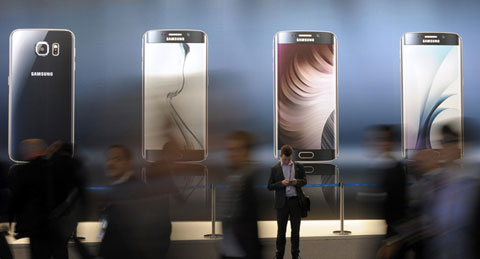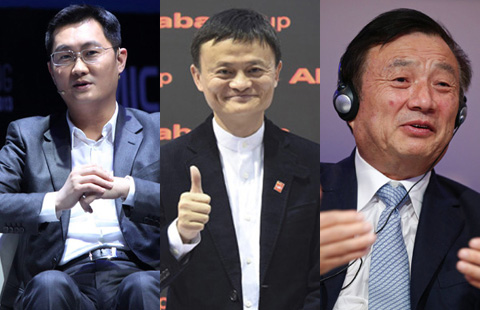Slower growth, healthier economy
(Xinhua) Updated: 2015-04-16 09:10NBS spokesperson Sheng Laiyun said Q1 economic growth was within a "reasonable range" and the slowdown was within expectation.
A "new normal" of slower growth is a desirable outcome as China seeks to wean the economy off its reliance on exports and state-directed investment, and instead encourage private sector growth and consumer spending to ensure sustainable expansion in the long run.
Progress has been made to shift to a more balanced and greener economy.
The service sector accounted for 51.6 percent of GDP in Q1, up from 48.2 percent in 2014 and 46.9 percent in 2013. Energy consumption per unit GDP continued to fall, recording a drop of 5.6 percent in Q1, after last year's 4.8 percent decline.
Thanks to efforts to cut red tape, simplify administrative procedures and cultivate new growth engines, newly registered companies mushroomed and high-tech industries blossomed.
The number of newly registered companies surged 38.4 percent in Q1,while new energy automobiles and robotics saw industrial output gain more than 50 percent during the same period.
Ample ammunition
Policy makers have repeatedly stated that the country has the firepower to avert a hard landing, and should the slowdown cause widespread unemployment or a drop in citizens' incomes, it would not hesitate to intervene.
Analysts expect the central bank, which has cut interest rates twice since November and once lowered the amount of cash the banks must hold as reserves, to roll out more policy easing measures.
Additional action is needed to contain pressure and to ensure the economy continues to run within a "reasonable range", according to Wang Tao.
Potential measures may include the acceleration of infrastructure projects, cutting benchmark interest rates, increasing liquidity provision or speeding up pro-growth reforms, she said.
Bob Liu, an analyst at the China International Capital Corp., expects the central bank to cut the benchmark interest rate once, and the reserve requirement ratio (RRR) six times this year. Barclays economist Chang Jian forecast one interest rate cut in Q2 and two RRR cuts.
Wang expects supportive polices to buttress real activity in Q2/Q3, helping GDP growth back up to 7.1 percent in Q2. However, she added, any revival will be hard to sustain if the property downturn, the biggest drag on growth, continues to intensify to the end of the year.
To avoid a sharper slowdown, policy makers have unveiled supportive measures, including relaxed home purchasing rules and more investment in major infrastructure projects.
Longer-term development plans include further reform and three major strategies -- the Belt and Road initiative, coordinated development of the Beijing-Tianjin-Hebei region, and development of the Yangtze River economic belt. All of which are designed to unleash growth potential.
Sheng Laiyun expressed confidence that China will maintain stable and healthy growth, adding that the economy has the potential and condition to maintain a medium-high level of growth.
Ongoing industrialization, urbanization, agricultural modernization and digitalization will be the major source of growth momentum for the economy, Sheng said. When combined with macro-economic control measures, the official said, the economy is poised to maintain stable and heathy development.
- Zhuzhou CSR nets subsea firm in UK
- Nokia to snap up Alcatel for $16.6b
- Japan bumps China as top holder of US Treasury debt
- Realty growth sinks to single-digit level
- Top 10 industries with most job-hoppers
- AIIB to operate in 'transparent way'
- Launch of AIIB promises fast track to common development, win-win cooperation
- China exports bullet trains to Argentina

















